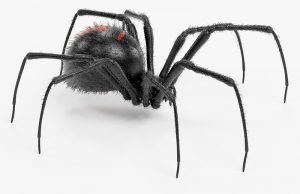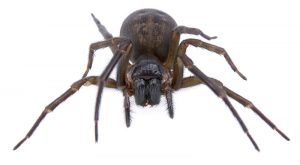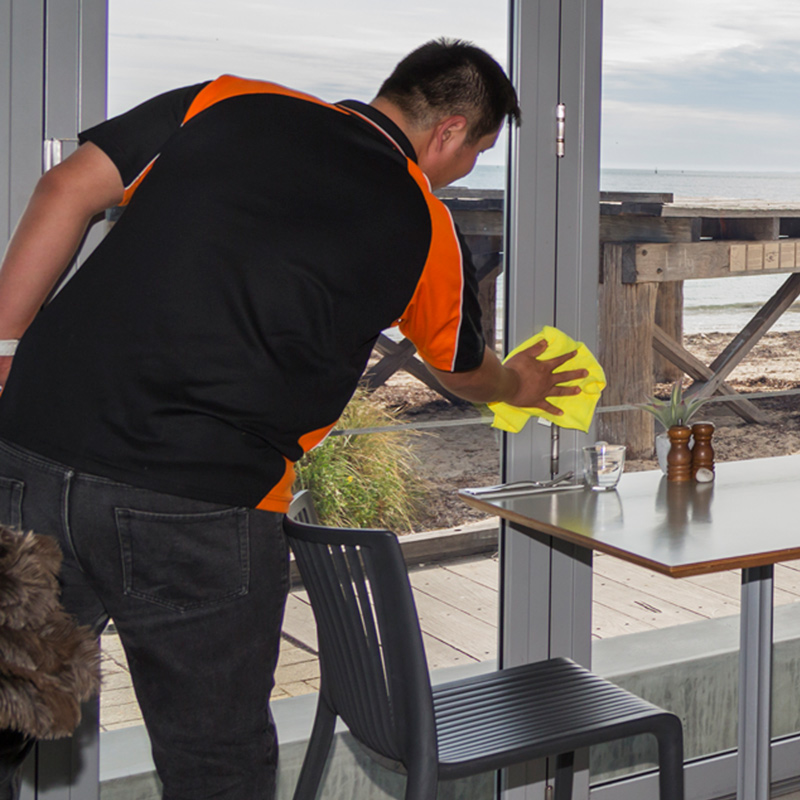IF YOU DON’T LIKE SPIDERS, YOU’RE NOT ALONE.
Arachnophobia is the most common animal-based phobia. For most people, spiders best define the term ‘creepy crawlies’. Spider webs are unsightly and a nuisance around the house.
Pestpro treats outside, and, if necessary, inside, depending on the level of infestation. Discuss your spider problem and our warranties with a friendly Pestpro Customer Service Advisor.
The bites of some spiders can be dangerous. The Redback is also poisonous to humans.. The White-Tailed Spider has been implicated in the development of ulcers that are difficult to cure.
Simple Prevention
Spiders generally enter buildings through gaps like unscreened windows or under doors – so draught excluders can be an effective deterrent. Most spiders are nocturnal and therefore more active at night.
Despite their fearsome appearance, it’s actually good to have a Huntsman around the house. These large, non-venomous spiders’ prey on the more dangerous white tailed spider as well as cockroaches and other crawling insects.
Our Process
Easily recognisable by their eight legs, some people happily tolerate the presence of spiders whilst others cannot bear the thought of them.
Professional spider control is important for people with a real fear of spiders but also to control a large or repeat infestation.
Our treatments provide effective control of an existing problem and guarantee complete treatment of an infestation.
Our local technicians have expert knowledge about spider species. We can offer advice on how to spot the early signs of an infestation, to enable quick and effective targeted treatment for your home or business.
There are more than 35,000 species of spiders worldwide a few thousand of which (including the most dangerous) are found in Australia alone. Worried about spider bites? Spiders can be a particular nuisance in the home or business. They are attracted to warm, dark small spaces, like wall cracks, corners, air vents, and in the eaves of your home. Other spider species prefer to stay closer to the outdoors, weaving their webs in your garden or near your outside lighting. Most spiders are a nuisance primarily because of their webbing.
 Redback Spider (Red-back Spider) Latrodectus hasseltii
Redback Spider (Red-back Spider) Latrodectus hasseltii
Appearance
- The female red-back is black with a distinctive red or orange marking on its back, although this may sometimes be absent. These markings may be broken into spots in front and, sometimes, this white lines may be visible.
- The female can grow up to 15mm long. Males are very small and usually only grow up to 5mm long.
- The male has more complex markings than those of the female, incorporating white and sometimes yellow markings.
Lifecycle
- Female red-backs take about 2-3 months to mature and can lay 3-8 egg sacs between September and May. Each sac can contain up to 300 eggs. However, most of the hatchlings do not survive because they are eaten by their siblings and are very prone to wasp parasitism.
- Females may live for two to three years, whereas males only live for about six or seven months.
Habits
- Commonly found in logs or under rocks in the bush as they tend to reside in dark, dry areas. In suburban regions, the re-back has been known to live under roof eaves, floorboards, shelves, flower pots or in garden sheds.
- The web is a triangle of dry silk. The trap lines are sticky to assist with catching their prey.
- Redback spiders are carnivorous eating almost any small insects that are caught in their webs. They will also eat skinks and even juvenile mice, snakes and frogs.
 Black House Spiders (black spider) Badumna insignis
Black House Spiders (black spider) Badumna insignis
Appearance
- This species is a robust spider, 1-1.5cm in body length.
- Carapace and legs are dark brown to black and the abdomen is charcoal grey. The dorsal pattern of white marking is sometimes indistinct.
Lifecycle
- The female constructs several white silk eggs sacs, which are secured within the web retreat. The female stays with the eggs until they hatch. The spider lings then disperse.
- The spiders mature during the summertime and live for about two years.
Habits
- Black house spider webs form untidy, lacy sheets with funnel like entrances. They are found on tree trunks, logs, rock walls, and buildings (also in window frames and crevices).
- Commonly also found in urban areas, Black House Spiders also build webs in dark corners of windows, veranda’s, sheds of fences.
- The female spider never leaves her web unless forced to, but keeps on repairing it – old webs can look grey and woolly from the constant additions of silk.
- Poisonous but no fatalities.
 White tailed Spider (Lampona cylindrata)
White tailed Spider (Lampona cylindrata)
Appearance
- They are generally dark red or grey with dark orange banded legs.
- Younger spiders can bear two pairs of faint white spots with a white spot at the tip.
Lifecycle
- Males can grow up to 12mm and females up to 18mm.
- White-tailed spiders lay eggs in a disc-shaped egg sac, containing up to 90 eggs.
- They lay these sacs in dark and sheltered places where the the females guard their eggs until they hatch.
Habits
- Commonly found underneath bark, rocks, leaf litter and logs in the bush and around the home and garden.
- They eat other spiders including daddy-long-legs, redbacks and black house spiders, and as such are most active at night when their prey is out hunting.
- They move indoors during summer and autumn where they look for shelter in nooks and crannies, searching for prey.


















